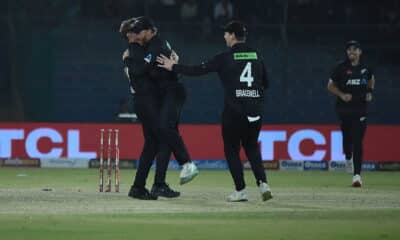
Earlier this month, the ICC announced a number of changes to the Playing Conditions and some could become talking points at the upcoming Have a look at the list of five changes to the Playing Conditions that the ICC has made ahead of the T20 World Cup in Australia.
Batters Returning When Caught
The new batsman will have to take the strike when one of his teammates is out caught even if the outgoing player had changed ends with the non-striker. The previous law allowed the non-striker to take strike for the next ball in case he or she crossed prior to the catch being taken. This law change could be match-defining in Australia, especially at the death with the batsman that’s in looking to face the majority of the remaining deliveries.
Running Out Of The Non-Striker
This is arguably the most eye-catching change that the ICC has made to the Playing Conditions. They have moved the law from the ‘Unfair Play’ section to the ‘Run out’ section. The law will allow bowlers to run out a non-striker without thinking about the spirit of the game in case the batter is backing up too much.
The In-Match Over Penalty
The fielding team will be forced to bring an additional fielder inside the circle for the remaining overs in case they fail to maintain the over rate. While this change came earlier in the year, teams are still adjusting to the recent changes. We have seen bowling teams being forced to field an additional player inside the ring in the death overs with the over rate not being maintained. T20 cricket is a game of fine margins and this could make all the difference.
Unfair Movement By The Fielding Side
The fielding side will be penalized in case any of its players are found guilty of unfair and deliberate movement with an intention to distract the batter when a bowler is running into bowl. The umpire can now award five penalty runs to the batting side and also declare the delivery as a dead ball.
The Striker’s Right To Play The Ball
Batsmen will now be required to have some part of their bat or body inside the pitch. Should they move beyond that, the umpire will call and signal a dead ball, and any ball which would force the batter to leave the pitch will also be called a no-ball. This is unlikely to happen at the T20 World Cup but it could become a talking point if it does happen.



























